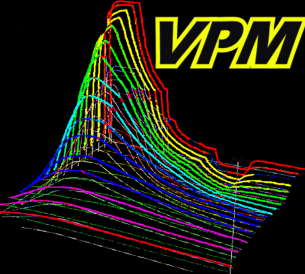|
|
Bubble
Model
|
 | |
|
A New Approach to Diving
Ascents The VPM, or so-called Hawaiian "Tiny Bubble"
model is a first-principles decompression model that was developed
by researchers at the University of Hawaii that naturally incorporates
deep stops into ascent profiles. The VPM decompression method was
calibrated to produce ascent times comparable to the US Navy
diving tables --and are accelerated from Bühlmann-Keller based
computations. Open Source Code VPM Bubble Model Programs In the early 1990s, I developed and used BASIC
language decompression programs, based on successive extensions of
Yount and Hoffman's VPM algorithm, for air, nitrox, and trimix diving
(Reference 1). I was motivated by the potential of the new algorithm to
reduce ascent times and to decrease the bubbling that we routinely
observed by Doppler probes following long decompressions based on
shallow-stop models. Examples of ascent schedules, calculated
by the VPM programs that are available on this site, are shown
on the
Santa
Barbara Alps and the
VPM
Trimix pages. During 1999 and 2000, I had the privilege of collaborating with the originator of the VPM, Prof. David Yount, as well as Erik Baker, who closely ties his diving experience to decompression algorithm development. An essential principle of our collaborations was that our work should be open in algorithms and code --so that those on the decompression line could fully access (and hopefully understand) our models and assumptions. I therefore encourage divers to delve into the details, and applaud those programmers who continue the VPM tradition of making source code and deco tools transparent and freely available. If you don't program, then I encourage you to go to the Links page and download the VPM decompression programs with graphical interfaces. If you are interested in the VPM algorithm's details, you can download a number of open source programs from VPM Decompression Site .
Rob
Murray runs a mailing list concerning decompression computation and
practice. If you are interested in subscribing, then drop him a line and
tell him that the VPM web site sent you! Reference 1The appendix of: D.E. Yount, D.C. Hoffman, On the Use of a Bubble Formation Model to Calculate Diving Tables. Aviation, Space, and Environmental Medicine, February, 1986
|